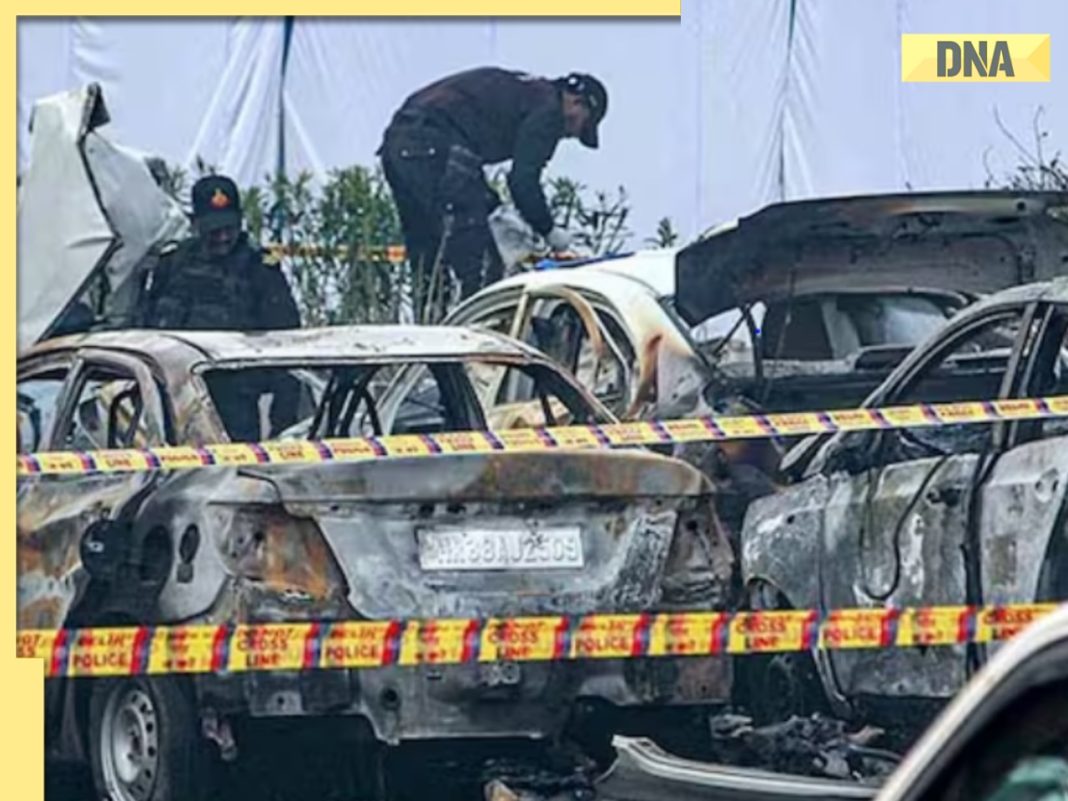A cloud of concern hangs over national security discussions following the recent Delhi blast, as investigations take an unexpected turn. While the immediate aftermath of such incidents often focuses on conventional suspects, the detention of Dr. Priyanka Sharma, a medical professional from Haryana, has unveiled a potentially insidious facet of terror operations in India: the ‘white collar’ terror module. Her alleged link to the network behind the blast has sent ripples through intelligence circles, prompting a deeper look into how seemingly ordinary professionals might be leveraged in sophisticated terror plots.
The Delhi Blast and the Expanding Investigation
The recent explosion in the heart of Delhi sent shockwaves across the nation, triggering an immediate and intensive investigation by premier security agencies. While details surrounding the blast itself remain under wraps as probes progress, the initial focus was on identifying those directly responsible for the act. However, as investigators pieced together clues from the blast site, digital forensics, and intelligence inputs, the scope of the inquiry began to broaden dramatically. It soon became apparent that the perpetrators were likely part of a more extensive, well-resourced network, rather than an isolated cell.
This expansion led agencies, notably the NIA and J&K Police, to delve into a complex web of logistics, funding, and ideological indoctrination. This painstaking process eventually guided them far beyond the immediate blast radius and into unexpected territories, including Haryana, where Dr. Sharma’s trail reportedly began.
Who is Dr. Priyanka Sharma? Unraveling an Alleged Double Life
The name Dr. Priyanka Sharma, now central to this unfolding narrative, has emerged as a figure of significant intrigue and concern. Hailing from Haryana, Dr. Sharma is reported to be a qualified medical practitioner, a profession typically associated with healing and public service. Her detention in Jammu and Kashmir, a region frequently at the forefront of counter-terrorism operations, suggests a deliberate and strategic involvement that transcended geographical boundaries.
Sources close to the investigation, speaking on condition of anonymity, indicate that Dr. Sharma is suspected of being a key facilitator within a ‘white collar’ terror module. Unlike traditional terror operatives who might be directly involved in combat or bomb-making, individuals in ‘white collar’ modules often utilize their legitimate professional standing as a formidable cover. Their roles can range from handling finances, providing logistical support, disseminating propaganda, or even leveraging their access to sensitive information. For a doctor, this could potentially involve providing medical aid to injured operatives discreetly, using their travel for courier activities, or exploiting professional networks for recruitment or intelligence gathering.
Her alleged involvement underscores a troubling evolution in terror tactics, where professionals with seemingly unblemished public images are co-opted into clandestine operations. Her digital footprint and intercepted communications are believed to have played a crucial role in her identification and subsequent detention.
The Ominous Rise of ‘White Collar’ Terrorism
Dr. Sharma’s case is not merely an isolated incident but a stark reminder of the growing threat posed by ‘white collar’ terror modules. These networks are notoriously difficult to infiltrate and dismantle because their members operate within the fabric of legitimate society, often holding respectable positions. They blend in seamlessly, making detection a significant challenge for intelligence agencies. This new breed of operative can leverage their professional skills and access to resources in ways that traditional terror cells cannot.
Commenting on this evolving threat, a senior intelligence official, requesting anonymity due to the sensitivity of ongoing operations, stated, “This case underscores a disturbing shift in terror strategy. When professionals from fields like medicine or finance are implicated, it signals a deeper, more insidious penetration into society. It challenges our conventional understanding of who a ‘terrorist’ might be and demands a re-evaluation of our intelligence-gathering mechanisms.”
The implications of such modules are profound. They can provide terror outfits with intellectual support, financial pathways, and operational security that are crucial for sophisticated attacks. The detention of Dr. Sharma highlights the urgent need for enhanced vigilance, not just at border checkpoints or through traditional policing, but also within professional circles and digital ecosystems. The investigation into her exact role and the full extent of this ‘white collar’ module is ongoing, promising to reveal more about the sophisticated networks attempting to destabilize national security.
The detention of Dr. Priyanka Sharma in connection with the Delhi blast investigation marks a critical juncture in India’s ongoing fight against terrorism. It serves as a stark reminder that the enemy within can sometimes be cloaked in the most unexpected guises. As agencies continue their painstaking work, the focus remains on unraveling the entirety of this ‘white collar’ network, understanding its modus operandi, and bringing all those involved to justice. This incident compels a nationwide re-assessment of vulnerabilities and reinforces the imperative for collective vigilance against all forms of terror, especially those that seek to exploit the very institutions designed to serve society.




